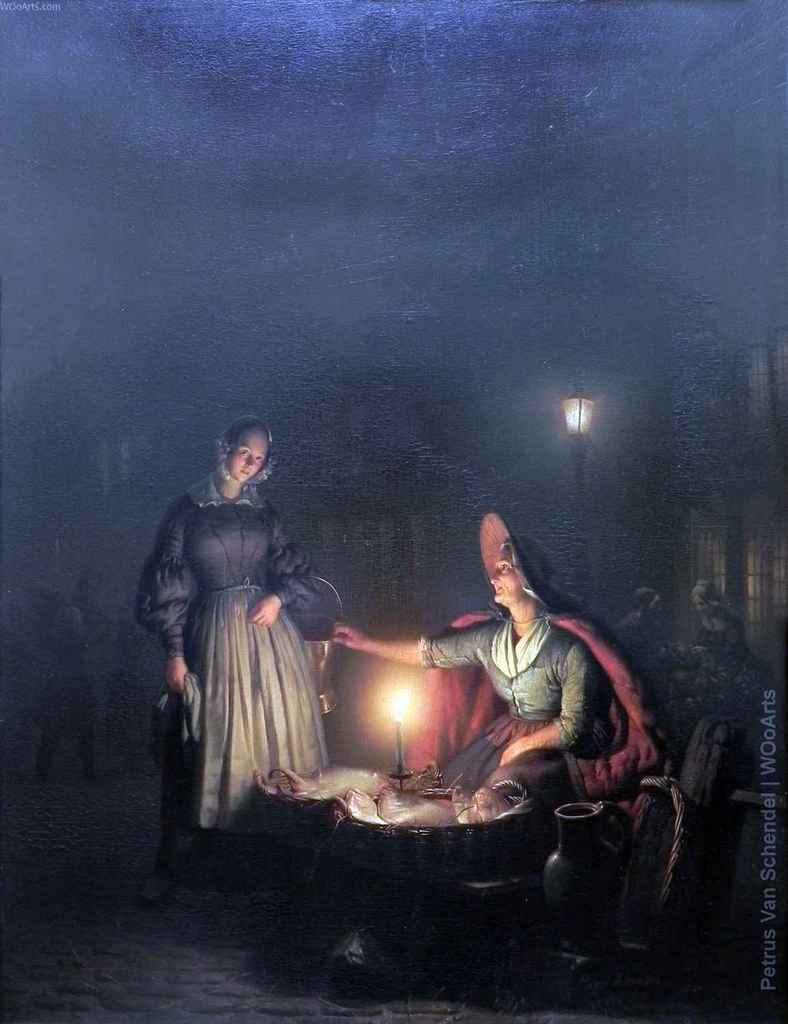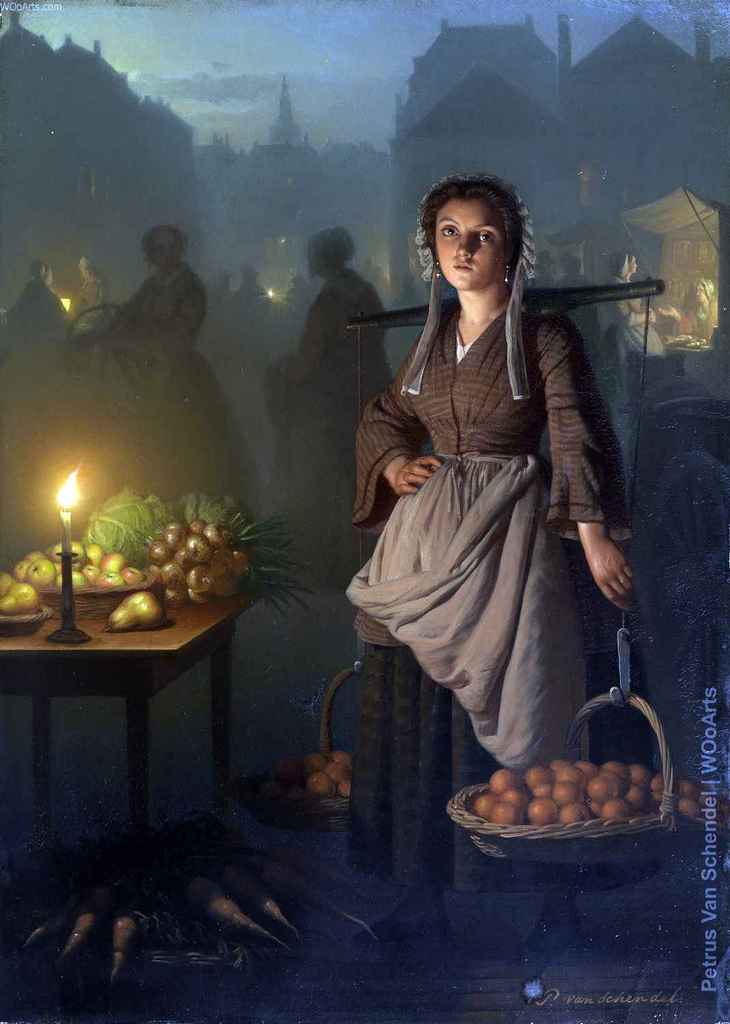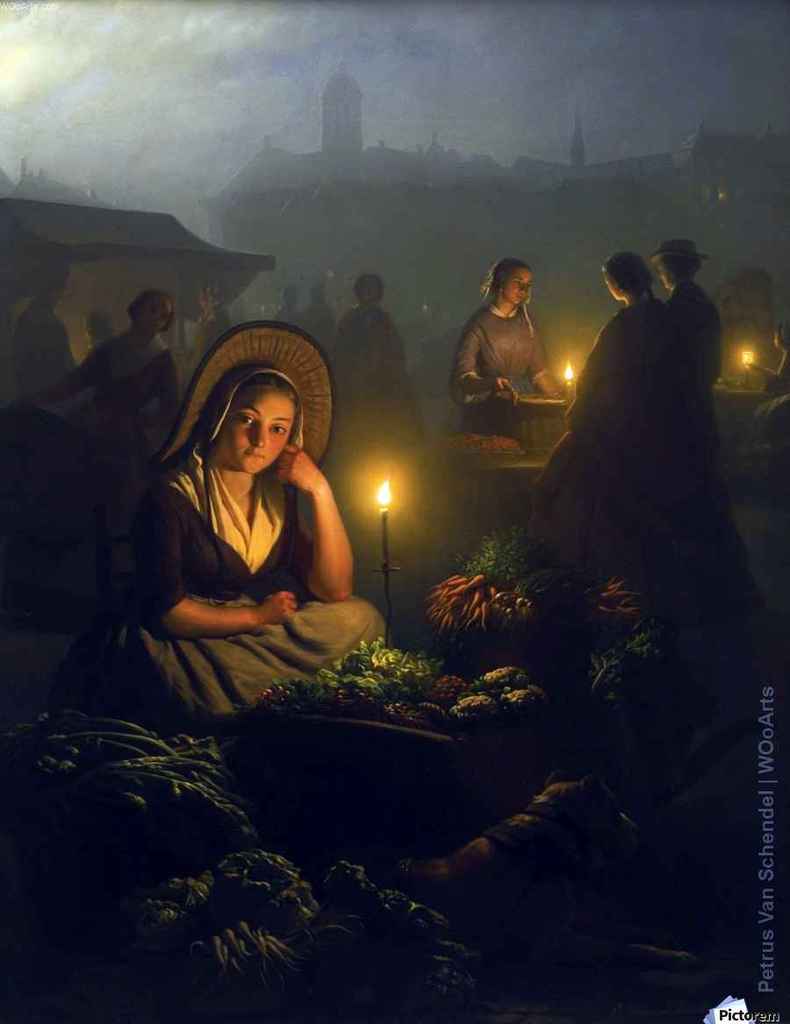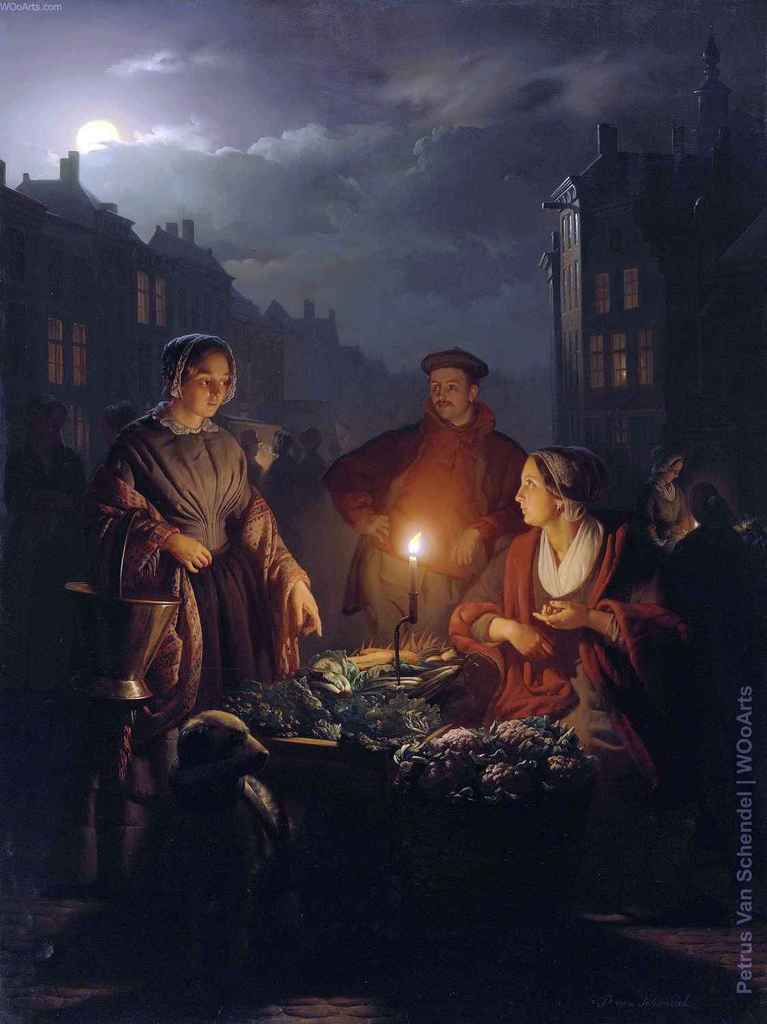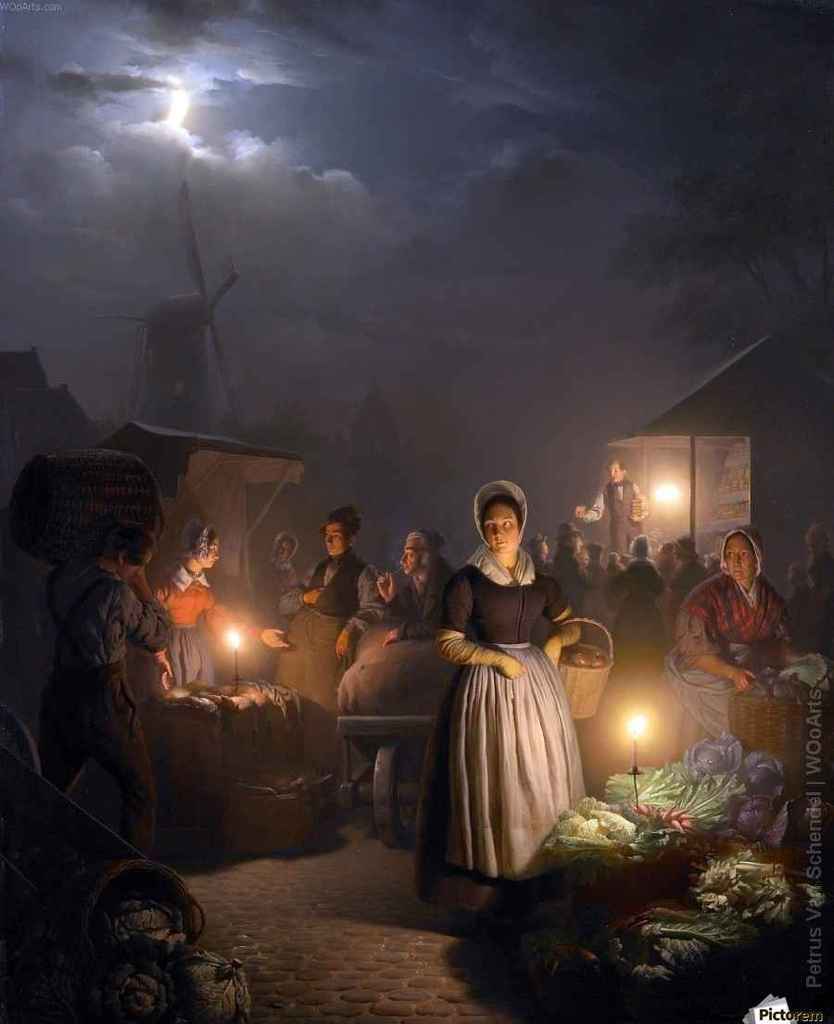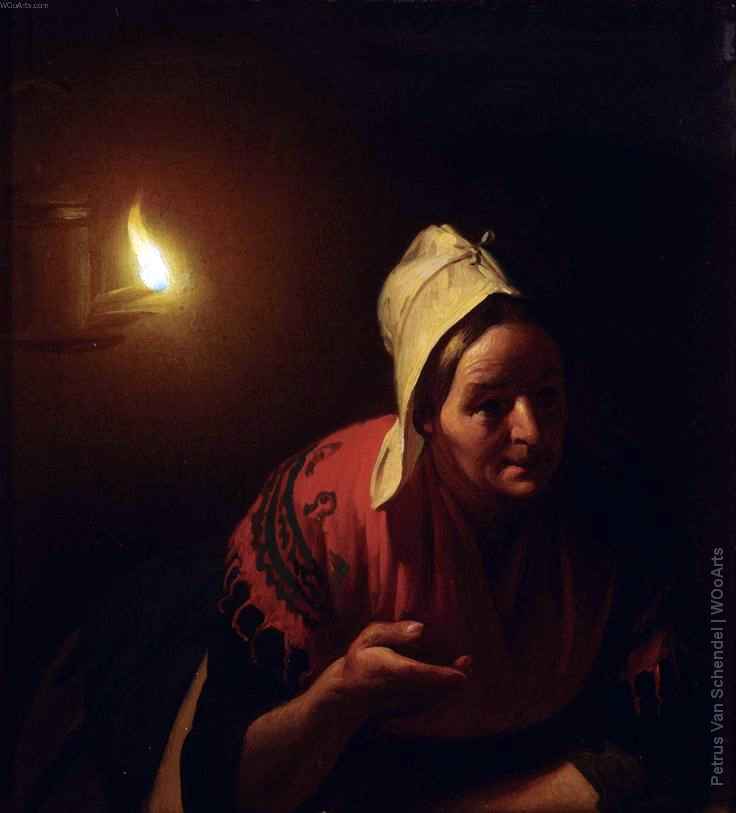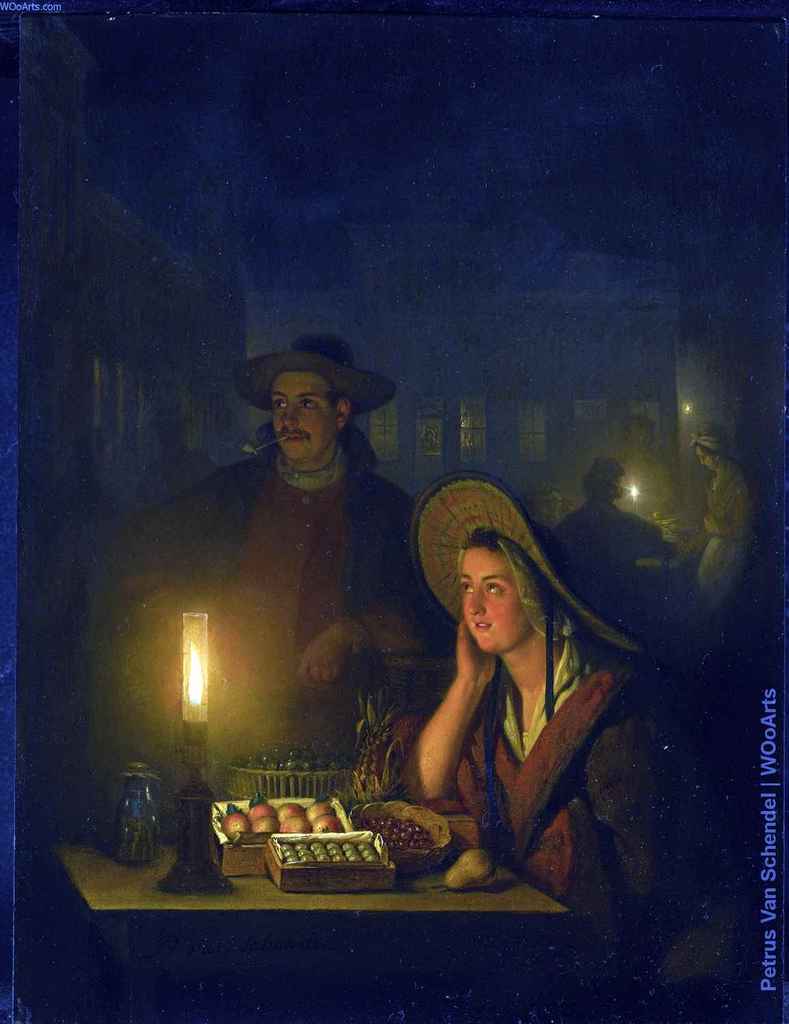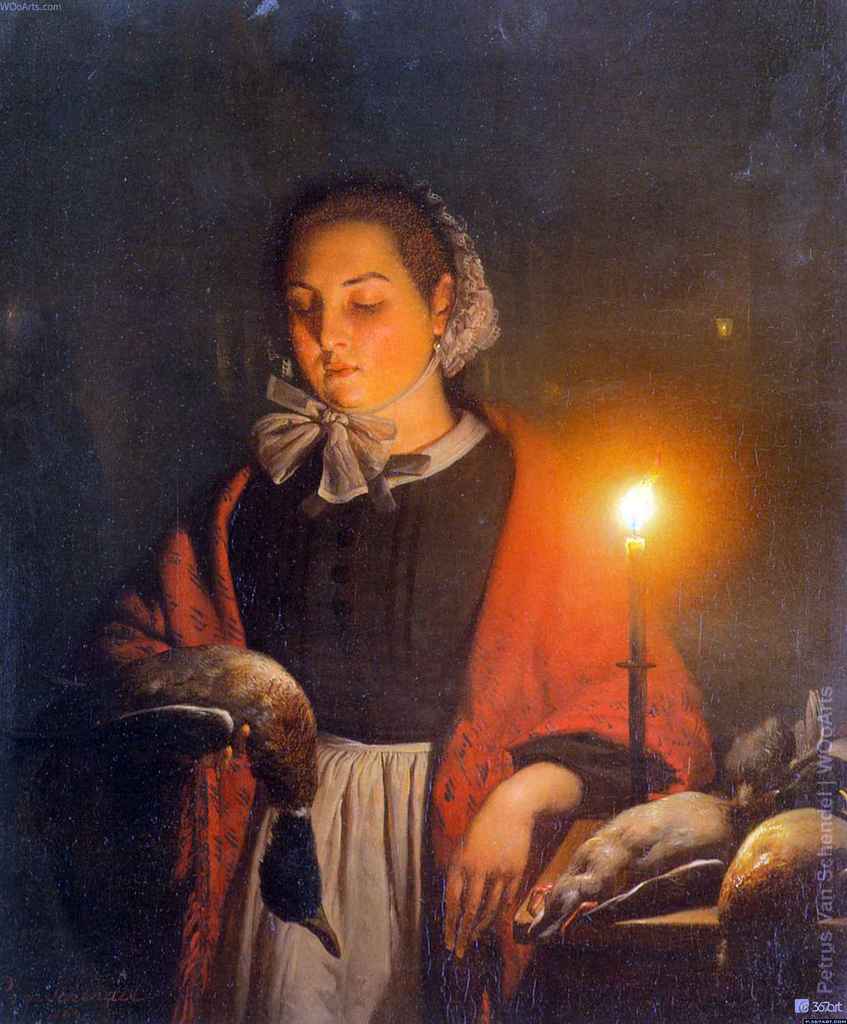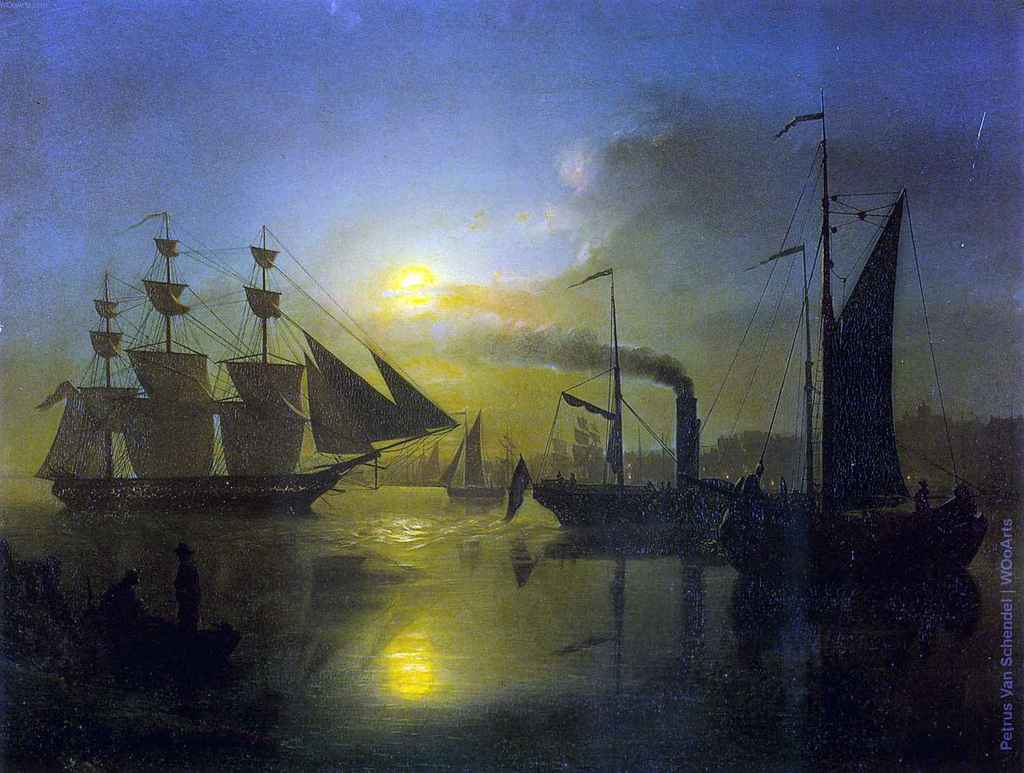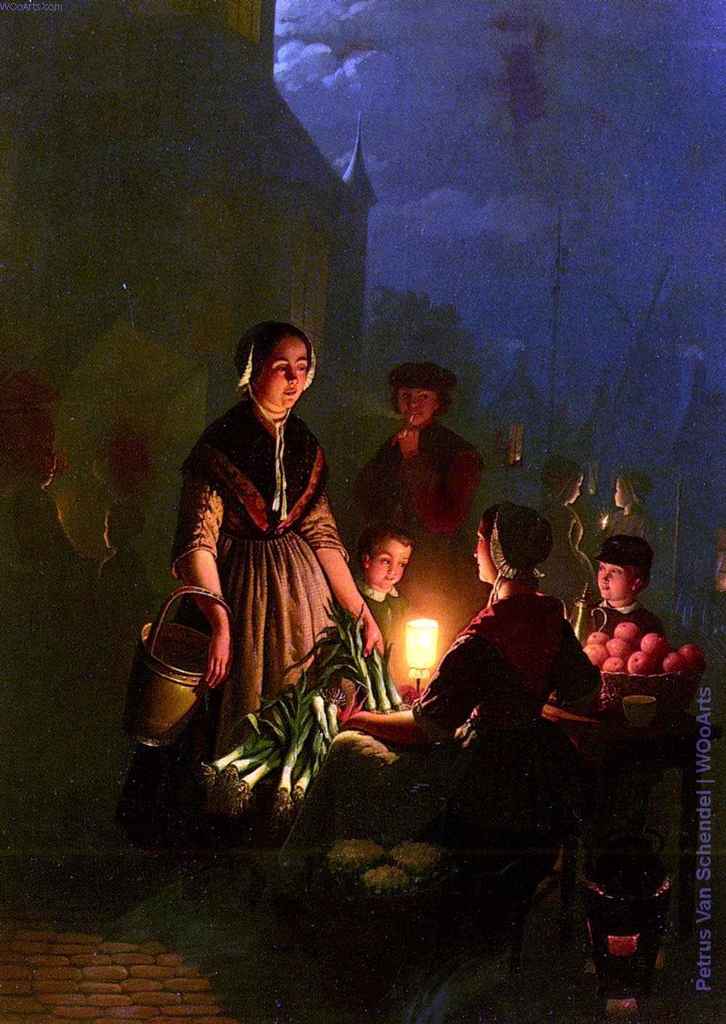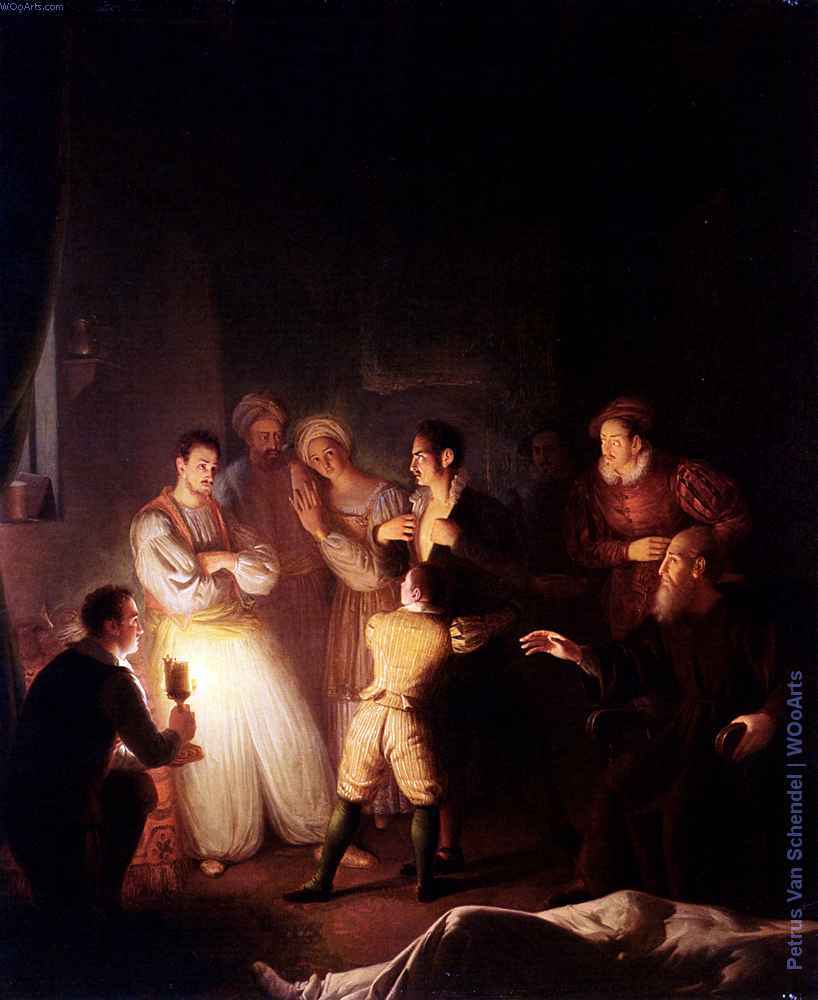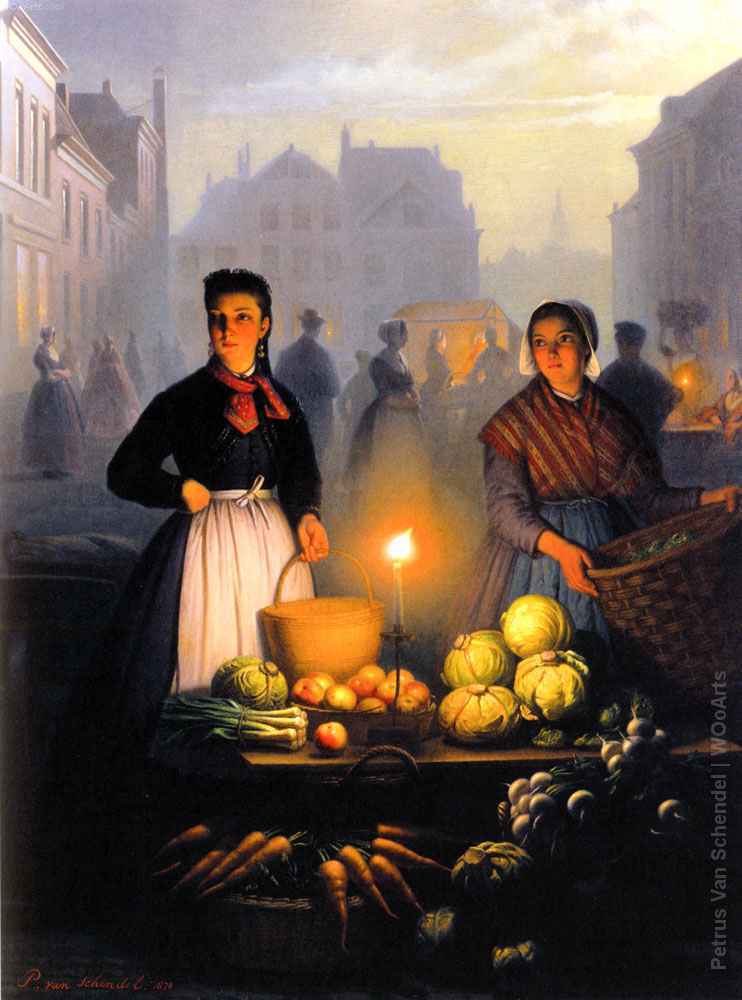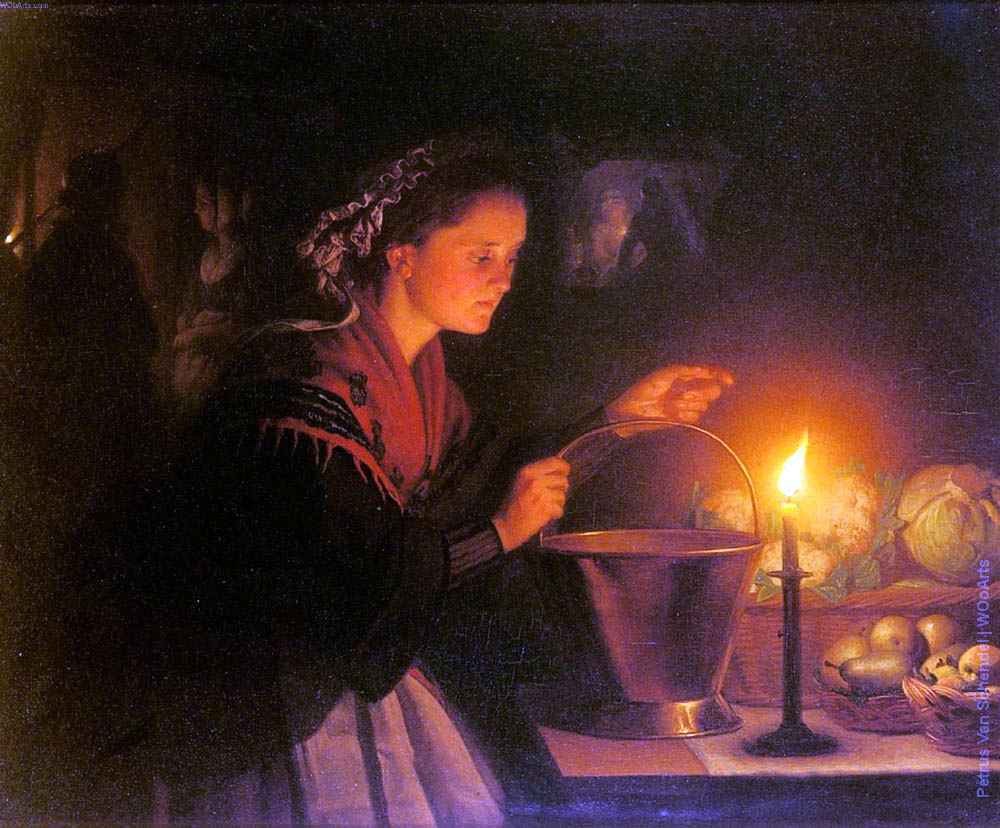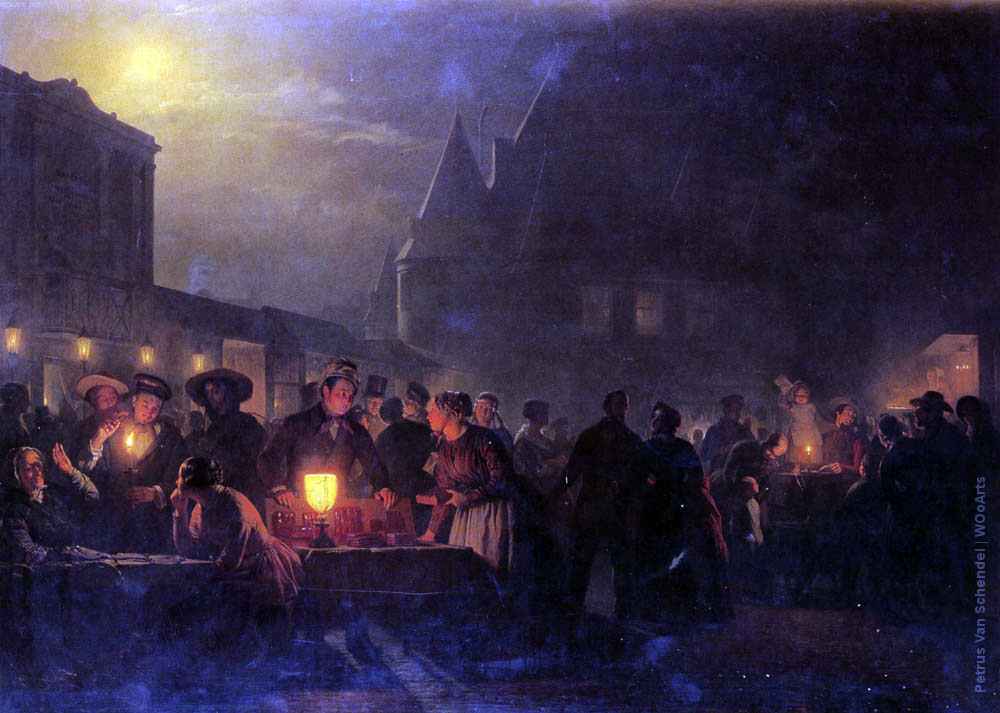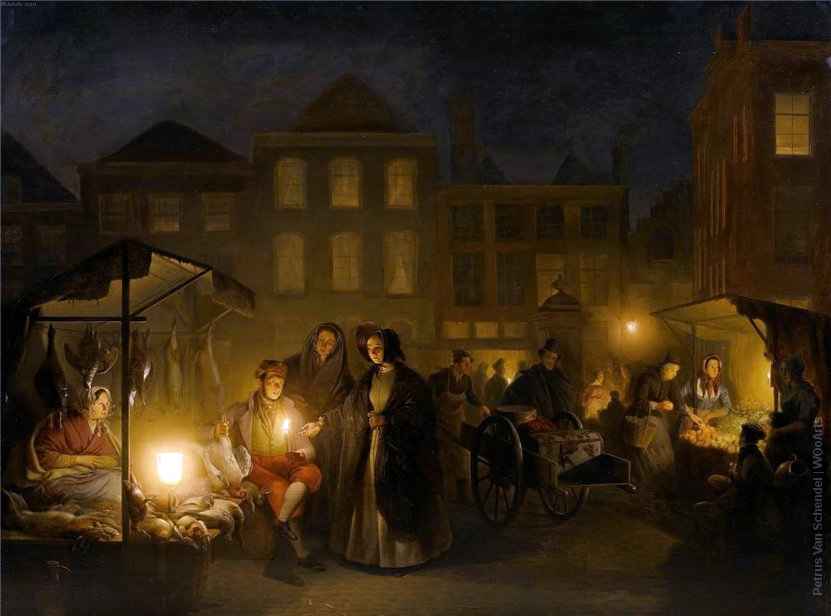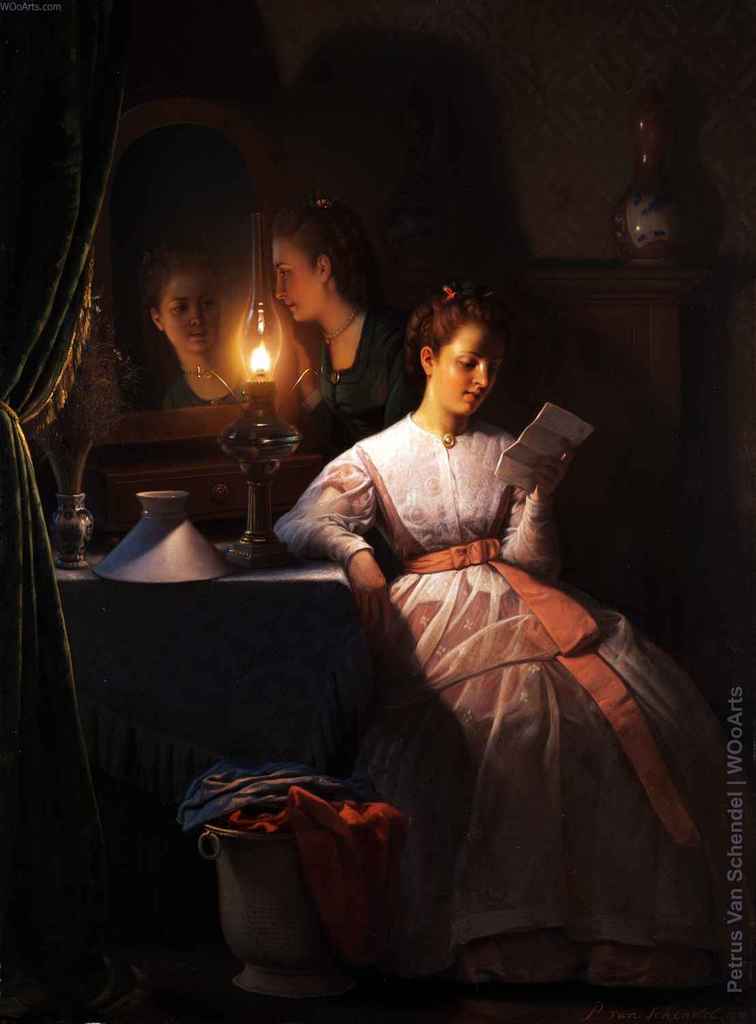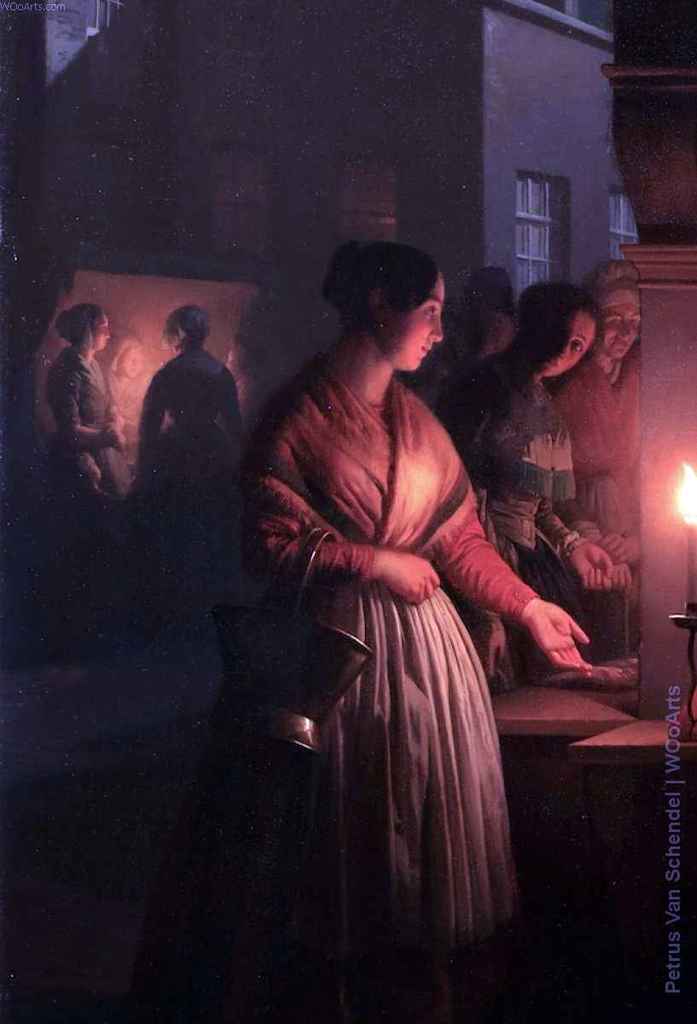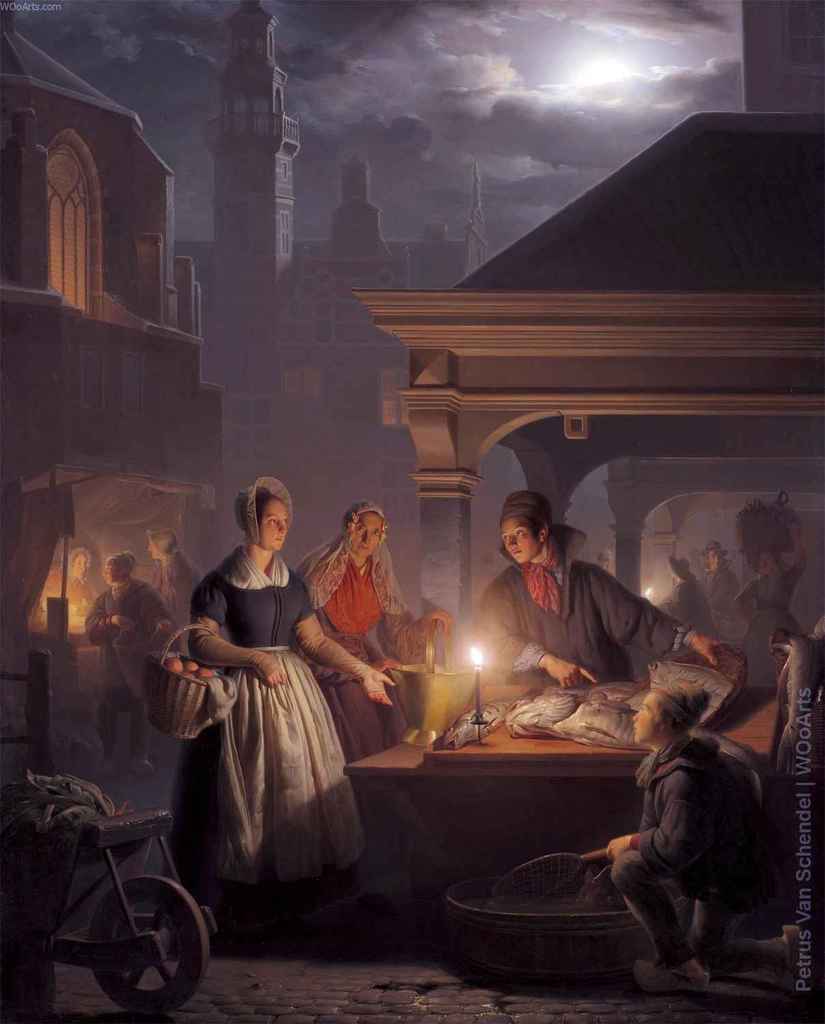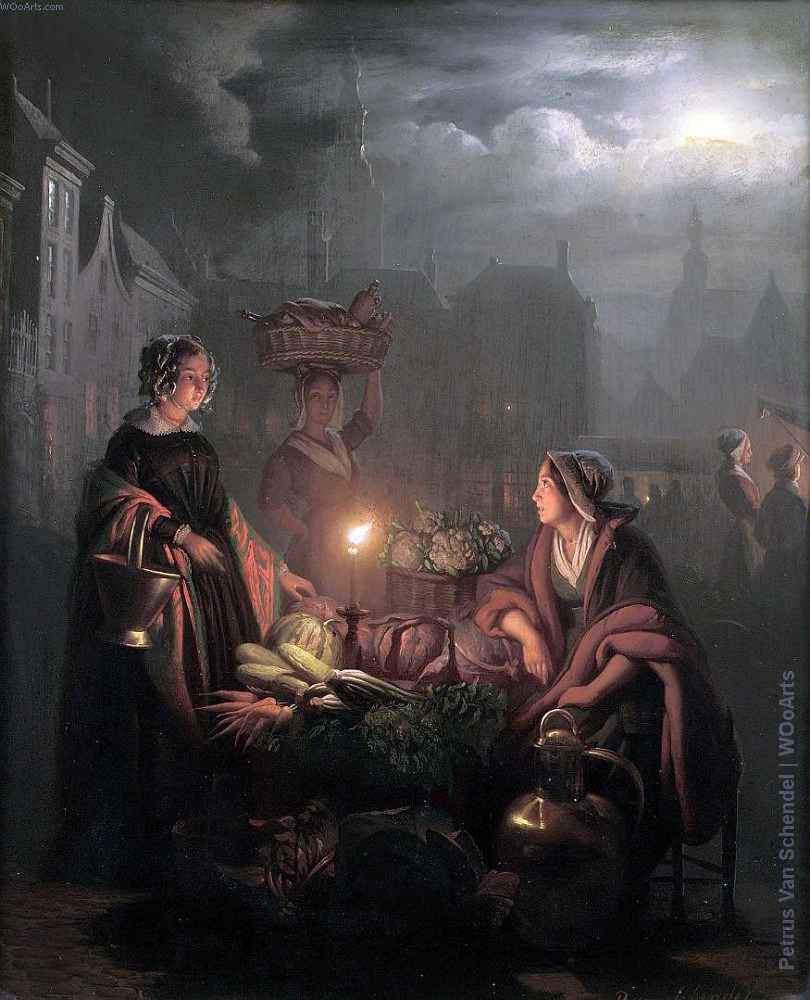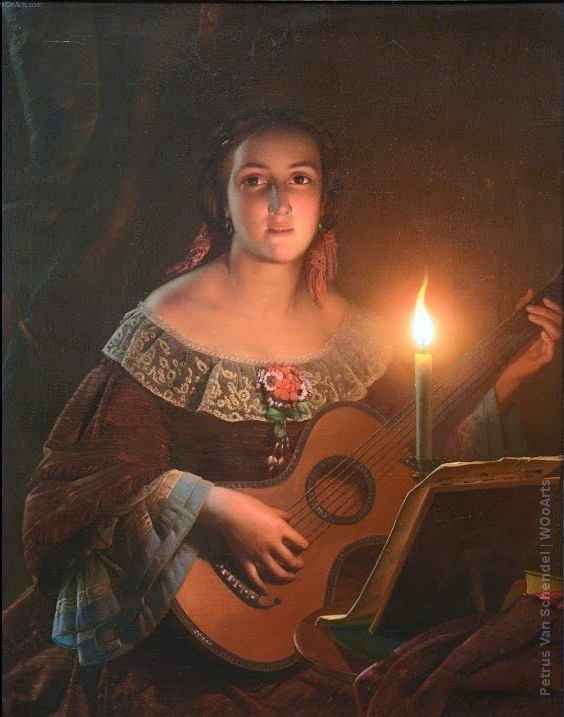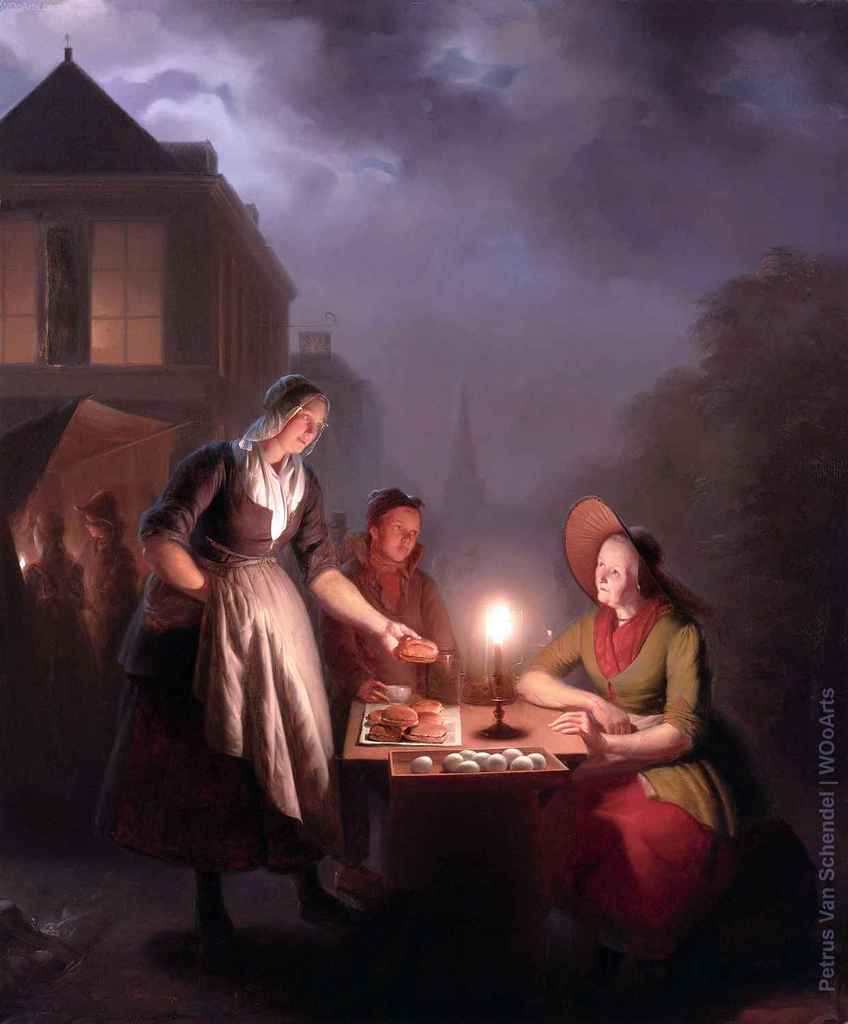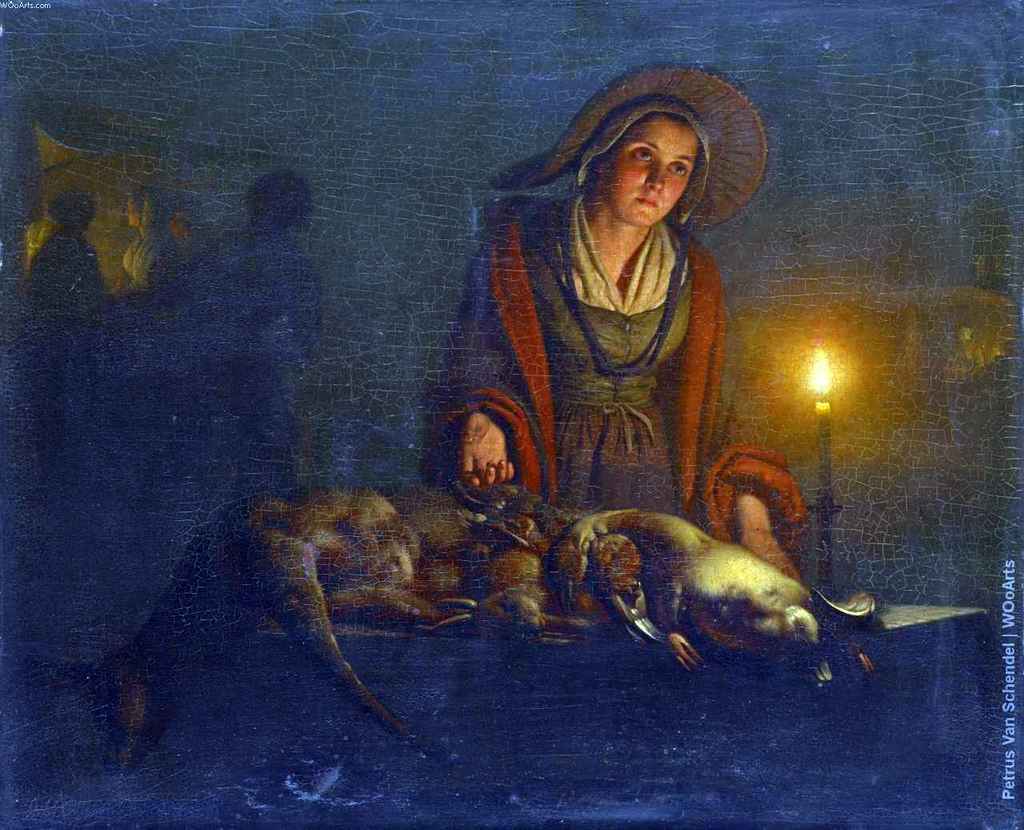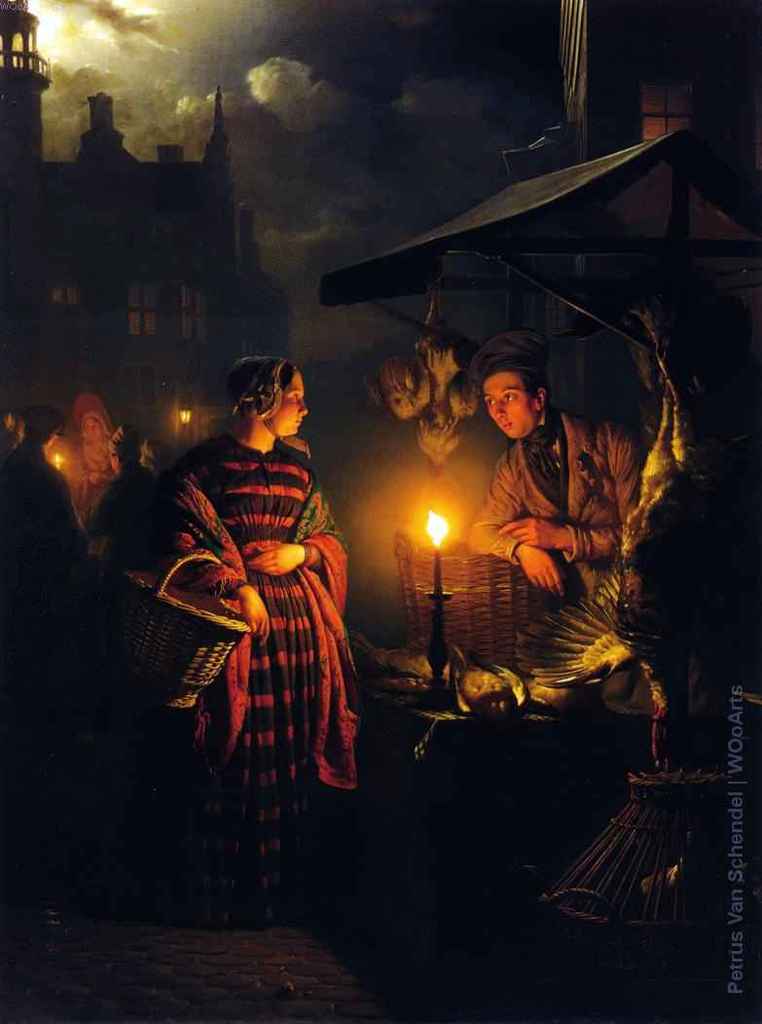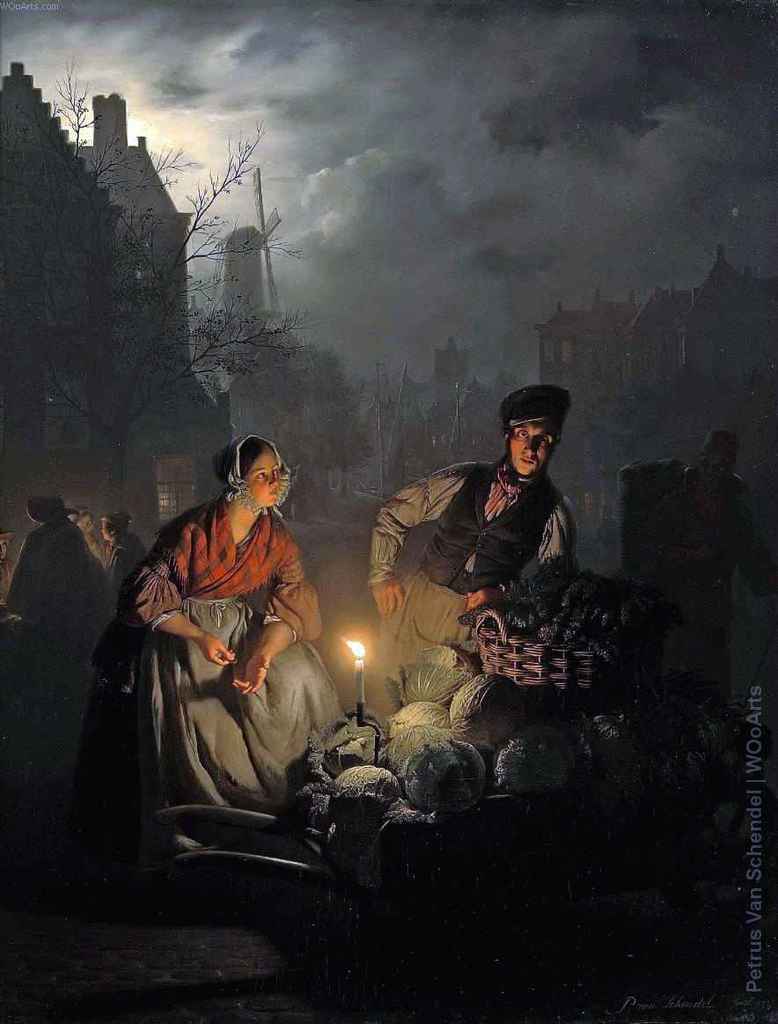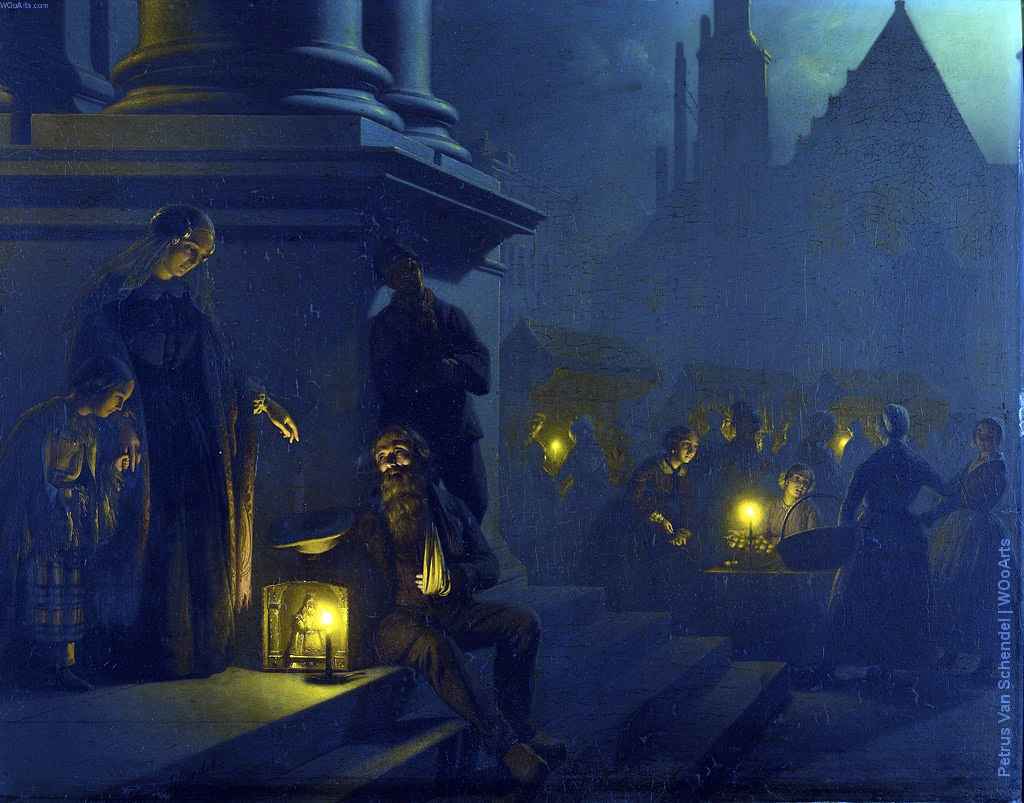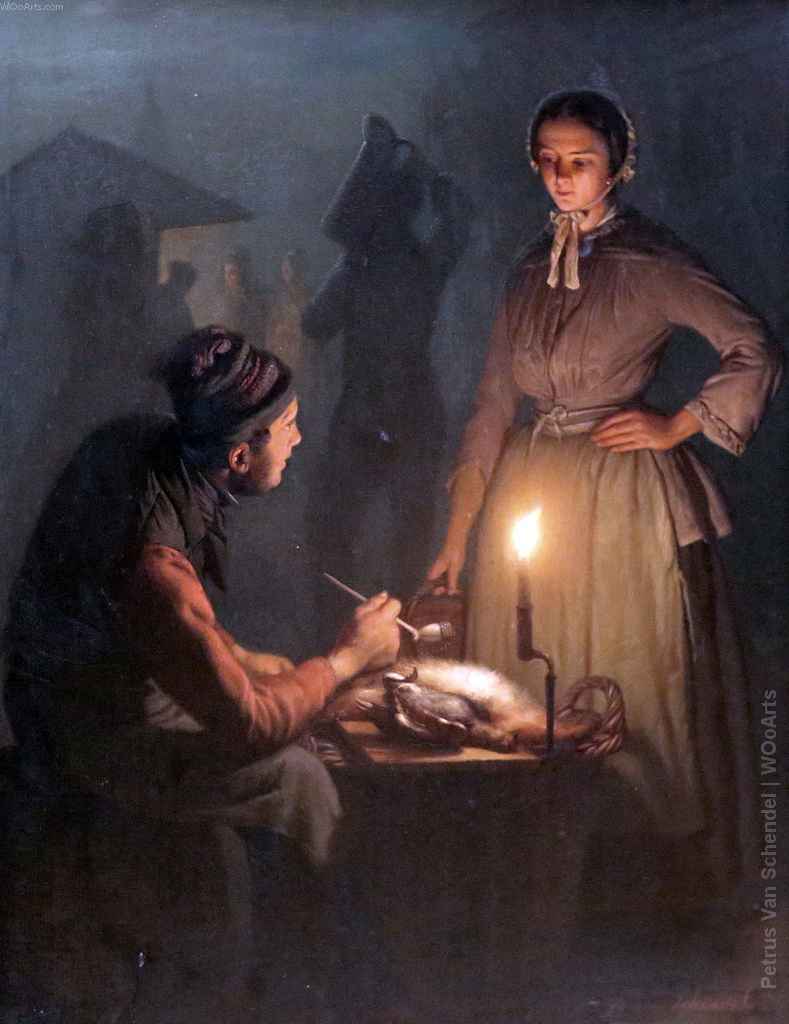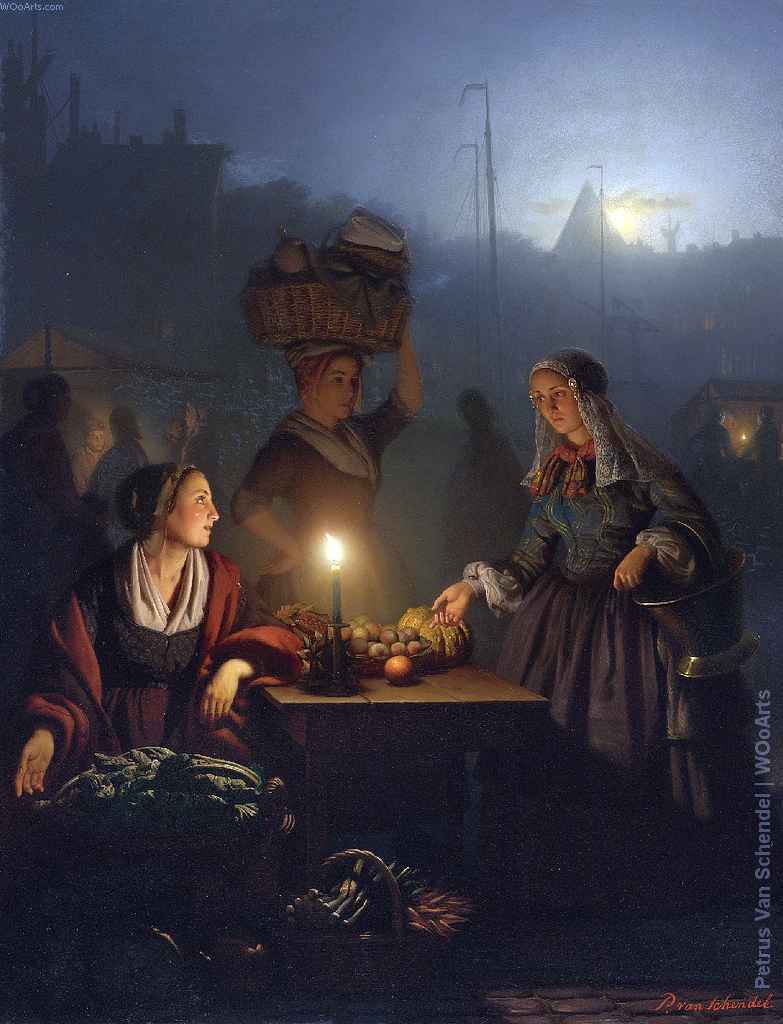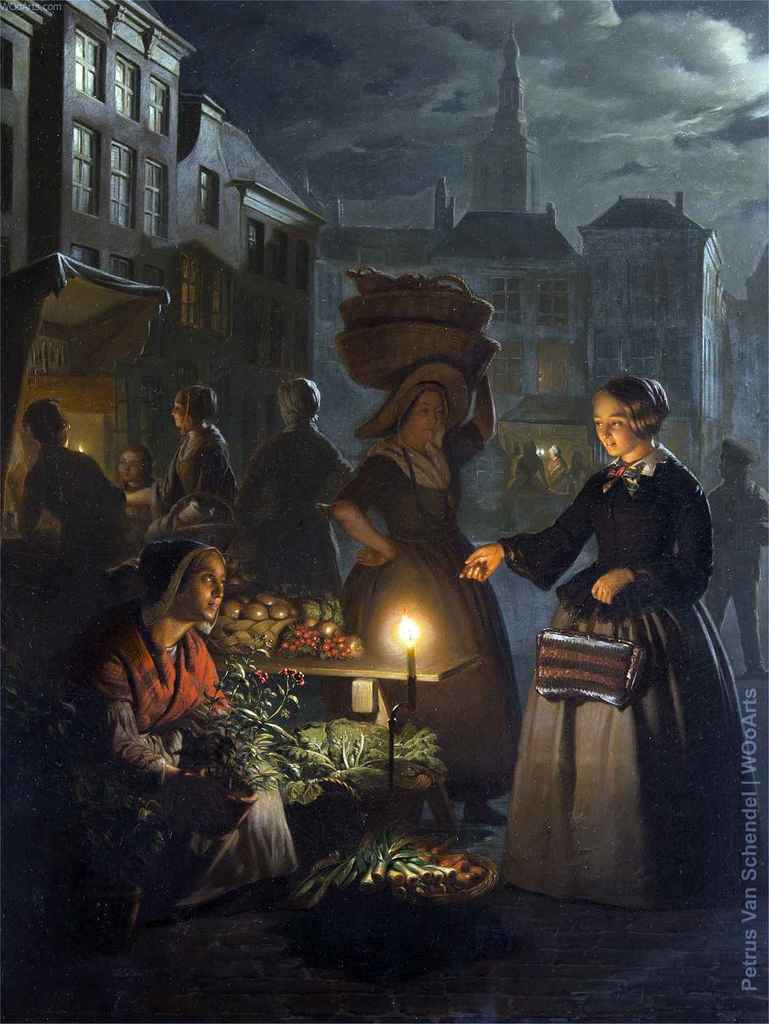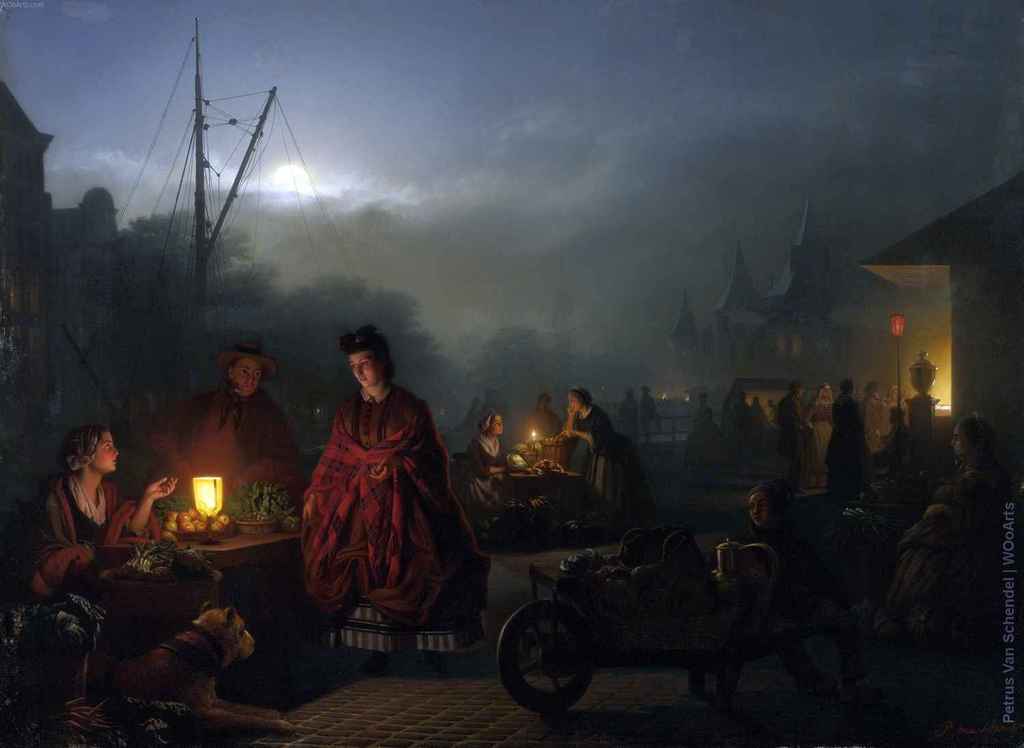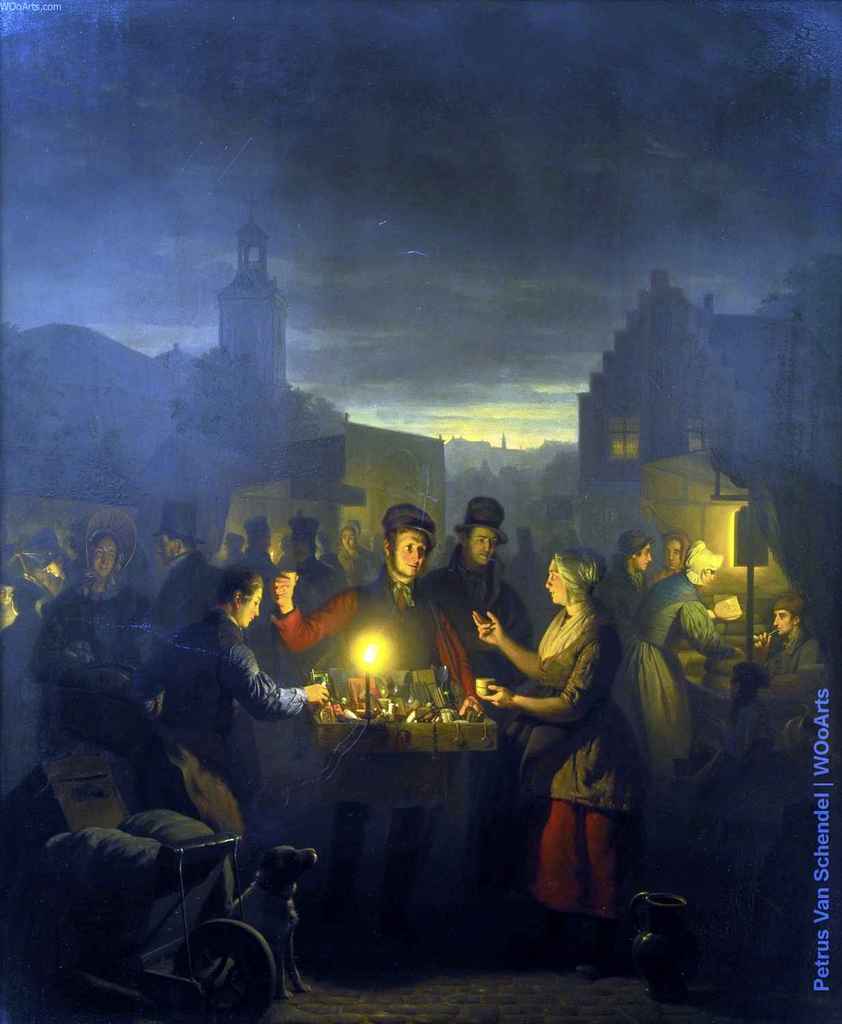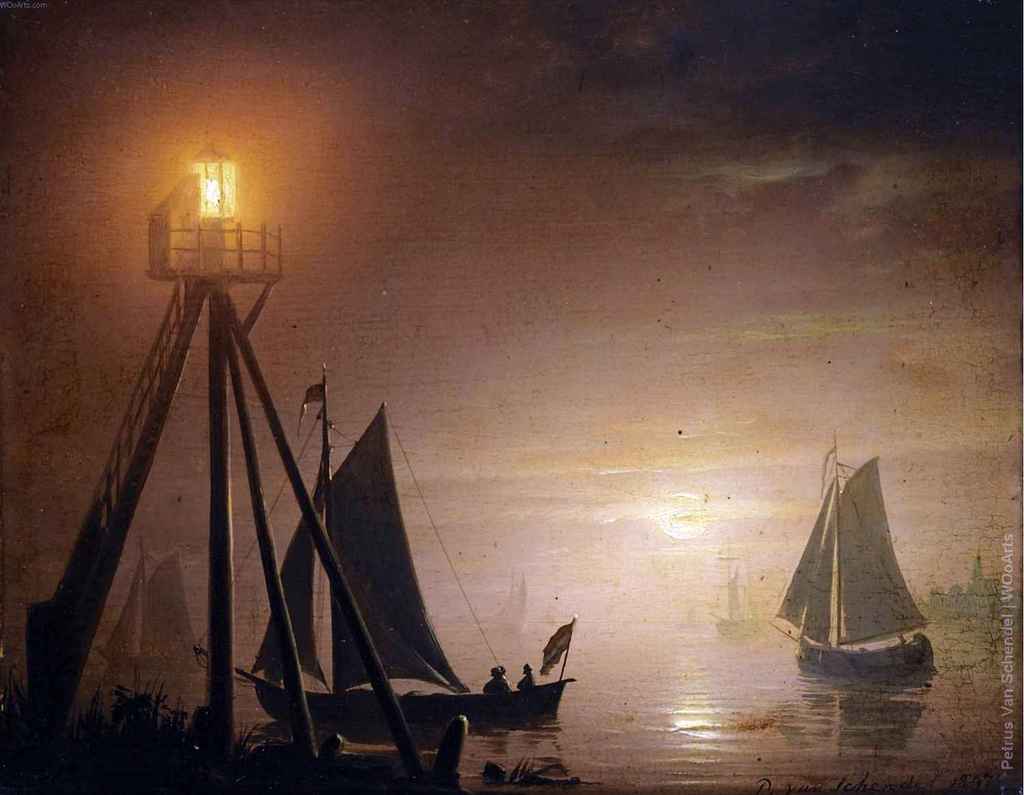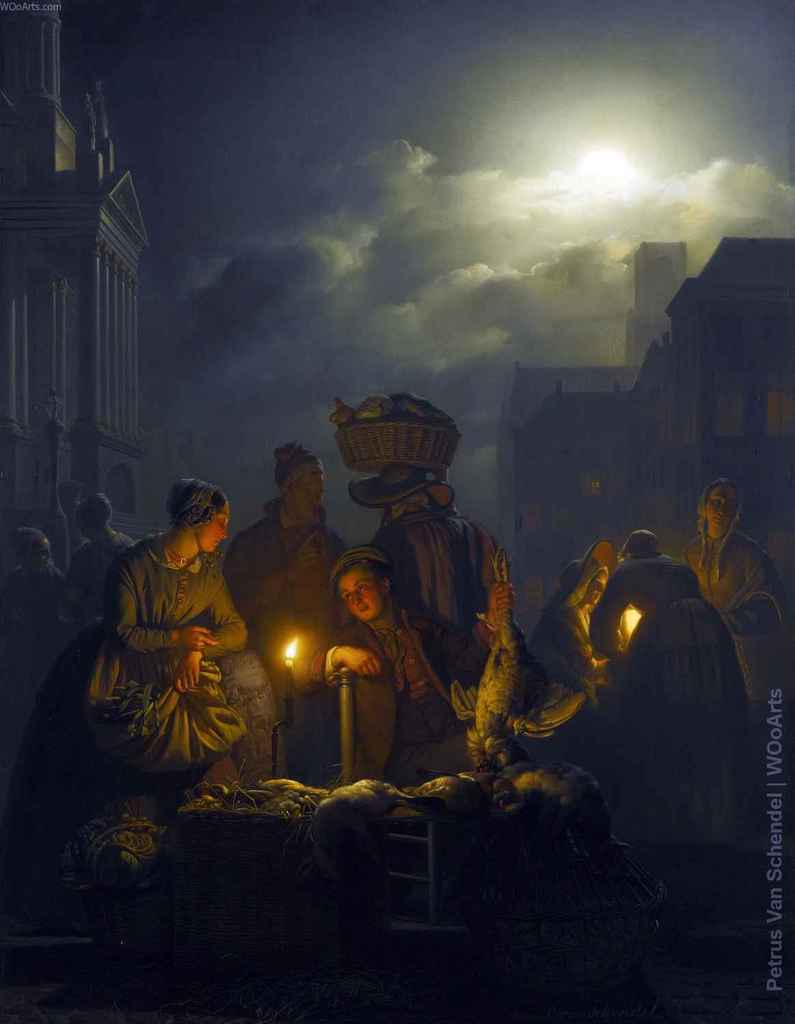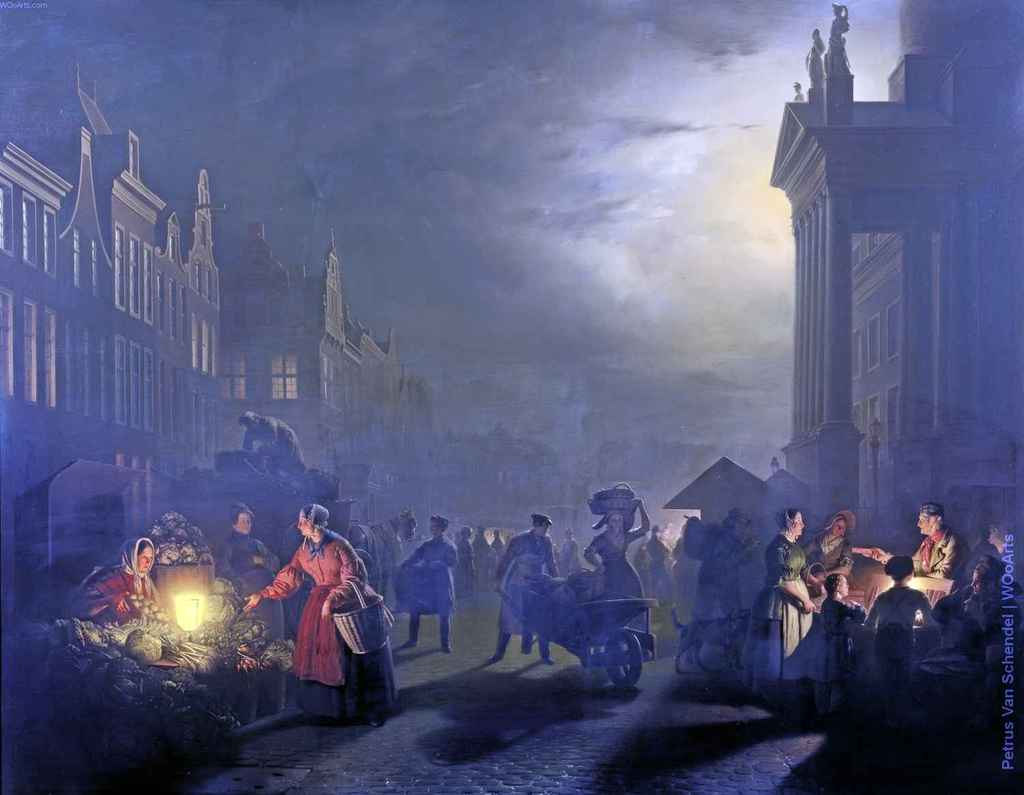Petrus Van Schendel is a dutch painter lived during 1806-1870. Few of the grand aspects of his paintings are the candle light and brilliant characters around to add more drama to the scene. On another context visualizing this from a photographer point of view, every painting of Petrus is more than scintillating for the depth of lighting and composition he has achieved.
Low light Market scenes seem to be his favorite subject and area of interest, Petrus shows us various forms of peoples lifestyles and brilliant drama in every painting. The Minute differences within lights and shadows and reflections all over the frame increases our interests towards it.
Also it is important to mention about the portraits drawn in this subtle low candle light. Every Portrait has the gentle character and elegance which makes them come alive.
Believe me, after few seconds we tend to forget these are paintings and start to analyze them as if in reality more than being just a photograph.
From the Wikipedia:
Petrus Van Schendel (1806-1870) was a Dutch-Belgian genre painter in the Romantic style who specialized in nighttime scenes, lit by lamps or candles. This led to him being known as “Monsieur Chandelle”.
On the advice of a family friend, who was a retired army officer, his father sent him to study at the Royal Academy of Fine Arts in Antwerp. He studied there from 1822 to 1828 with the history painter Mattheus Ignatius van Bree, and received a gold medal for “Perspective” upon graduating.
He made a name as a portrait painter and moved frequently, living in Breda (1828-29), Amsterdam (1830-32), Rotterdam (1832-38), and The Hague (1838-45). He was a regular participant in the Exhibition of Living Masters and the various “Triennial Salons” of Antwerp, Brussels and Ghent. In 1834, he was named a member of the Royal Academy of Fine Arts in Amsterdam.
In 1845, he settled permanently in Brussels. His studio there was divided into a well-lighted space where he actually painted, and a darkened space where his models posed. He won several medals at expositions in Paris and London during the late 1840s. Some of his works were bought by King Leopold I. He also published course books on perspective and facial expression.
He painted Biblical scenes and landscapes, lit by the moon, as well as his genre works and traditional portraits. Many of his paintings were also done as ink wash drawings and made into woodcuts. In 1869, he created a few experimental paintings lit by electric arc lamps.
In addition to his art, he was interested in the mechanics of steam engines and, in 1841, patented a device for improving the blades on steamships. He also devised suggestions for improving the lateral stability of railroad cars and reclaiming the moorlands in De Kempen.
He was married three times and had fifteen children; thirteen by his first wife, Elisabeth, who died in 1850.
Gallery
